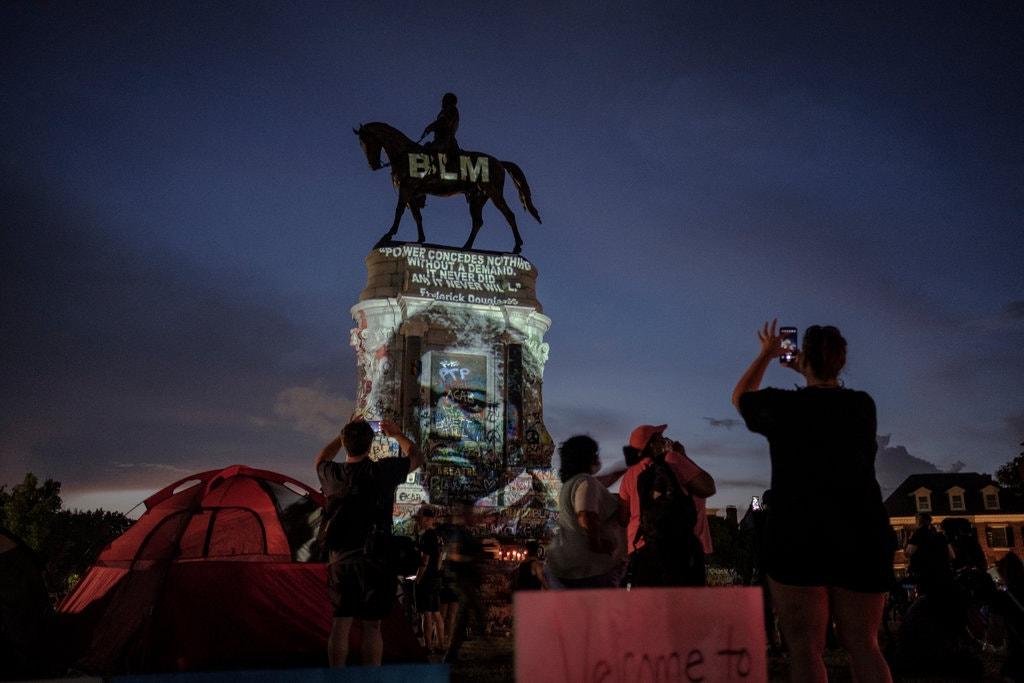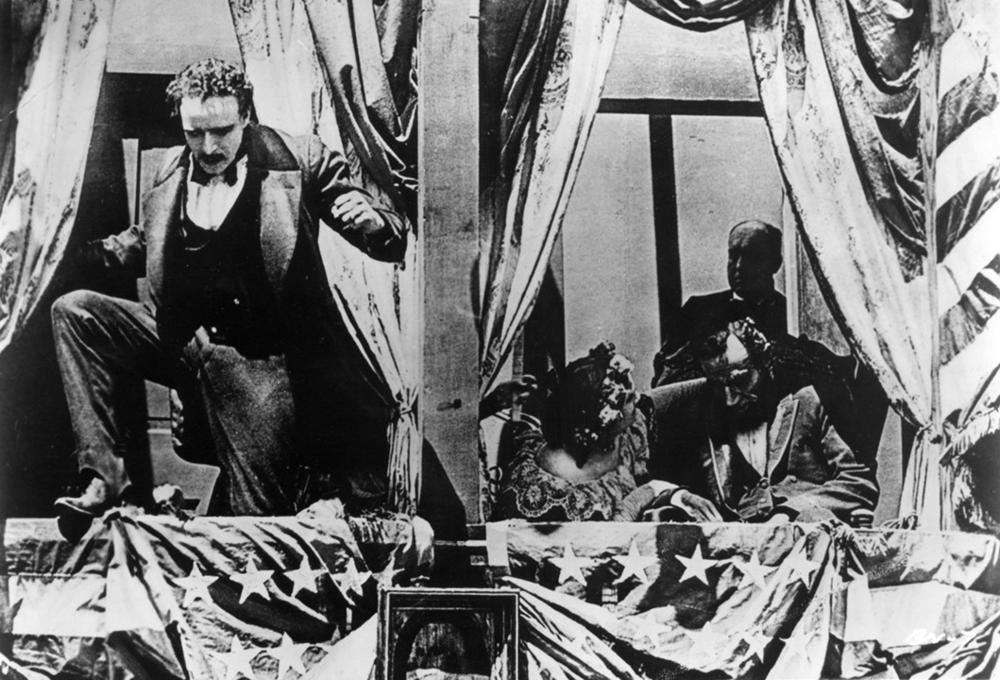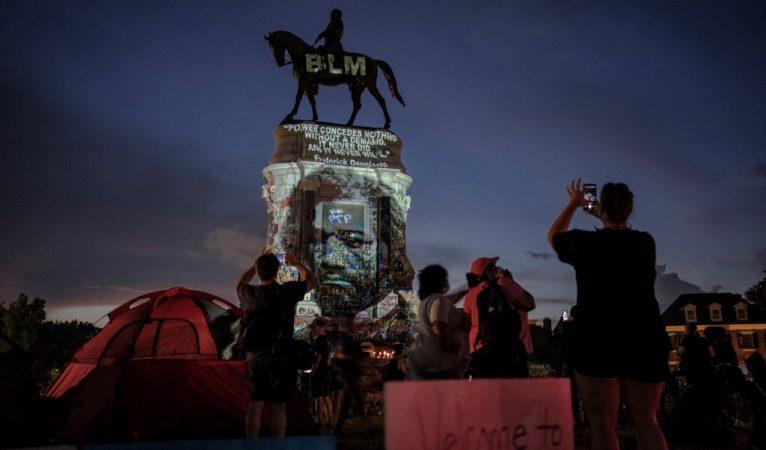

The losers ponder: what if we lose?
Prep for the post-game show begins. The big idea for the immediate aftermath: we’ll go out and say that the game isn’t over. So let’s start laying some foundation for that sourpuss woo-woo right now. Indeterminacy, shotgun-style. Crank up the fog machine. Those ballots are not going to be any good, the machine foretells. Talk about budgets and waste and postal service streamlining. Talk about the rigging. Predict fraud with a straight face to beat Buster Keaton. There. Look. It’s the day after…and some people have some real concerns. Numbers are in dispute. Invisible balls are reportedly still suspended in air over certain key states. And close-enough-for-horseshoes isn’t how things work here, son. We count. We verify. Those things take time. Sometimes a lot of time. One can’t just go and pick any old, desiccated piece of excrement from off the shelf, give it a spit and elbow shine, and then insist that this trophy is “good enough” for America. That would make a mockery of the sacred things.
Distract and delay. No surprise: those are rules one and two in the defendant’s handbook. They are especially helpful when one has landed on the wrong side of both the facts and the law. So bang on that pause button. Bang on it again and this time–with luck and a couple of rulings from a couple of just-dingy-enough judges–that whole George Washington Bridge massive traffic clusterfuck might end up looking like a minor, unmentionably municipal pretzel. Typical turnpike amateur hour, really. Can’t quite see the big picture until you get across the river and take a look from 58 floors above 5th Avenue. Did you know that we are standing right where Bonwit Teller used to be? Who remembers Bonwit Teller now? Who’s still shedding tears for that old guy? Was he a guy? Who cares.
That, at least, is the going, short term scheme. Predicting the gang’s extended ploy then turns a little more speculative, a little fuzzy, especially given that the gang usually operates without the buzzkill yoke of foresight. It’s hard, admittedly, to go long or even mid range when everything is guided by one, singularly backward-looking and trigger-happy psyche. Whatever is in the works, this much is for sure: the future doesn’t include any blueprints for another one of those boring presidential libraries that no one goes to. I mean, what would be in a library? Those four years signed a non-disclosure agreement. Fuggedaboutit.

So let’s work with what we know we can work with and then we’ll spin more aftermath based on that. We’ll start with a sacral victim. A corpse–figuratively speaking, of course–to rally around. Ecce mortius. Examine the fatal blow to the martyr’s head. It came from the back. The poor guy never saw it coming, really, even though the unsmiling Manhattan gentry and the unsmiling Chinese masses were against him from birth. They started in on him early and they didn’t relent until…this happened. But he fought. Oh, he fought for us. Even when he was the last white man standing upright at the Alamo. Even when we told him that he had already sacrificed enough, he still walked into the lions’ swamp with his old fashioned bucket and mop. Remember the last battle? Remember his final, awful roar? That was the unmistakable sound of extreme love…
…dying so to be reanimated, fingers crossed, in our memory.
Even if one can’t quite cut it in this life, there’s always a chance that the odds in the next one–figuratively speaking, still, of course–might turn out to be a smidge better. Sometimes, once you’re in the pasture beyond, people get nicer to you. You may benefit from a huge pay out in nostalgia currency. Maybe someone will smear a petroleum product on the lens, hiding the nastier edges of your personality. Time’s airbrush, in the right hands, does wonders.
Thanks to the work of scholars and Black Lives Matter activists, who are often one and the same, it has been made damningly clear that no other American political clique was more skilled and tenacious when wielding that airbrush than the one that summoned up the revisionist melodrama known as “the lost cause of the Confederacy.” With doctored textbooks, quid pro quo elections, and monuments to the dead chiseled up North and sent South for a price, Custis Lee, politico of the Lee dynasty, Henry Mosler, a painter, Edward A. Pollard, a writer–all obscure names now–answered the then popular call and helped concoct a story about the Civil War. About how it had nothing to do with the fact that some people got so mad about not getting to buy and sell other people anymore that they had to go out and start a war about it: even though, in 1861, the Vice President of the United States of the Confederacy, Alexander Stephens swore that slavery was the “natural and normal condition” of Blacks and that this condition was “the cornerstone” of the secessionist movement.
Strong stuff, Alexander. Too strong, looking back on it, the clique agreed. Instead, the ghostwriters of the lost cause of the Confederacy fancifully embroidered whatever other scraps of spin they could find. Such as the ramblings issued from the former President of the Confederacy, Jefferson Davis, who, in 1878, long after the war and at the end of Reconstruction, put lipstick on the dead horse by insisting: “Well may we rejoice in the regained possession of local self-government, in the power of the people to…legislate uncontrolled by bayonets. This is a great victory…a total non-interference by the Federal Government with the domestic affairs of the States.”
States’ rights. Self-determination. Throwing off a many headed oppressor. That’s what almost a million deaths and the lost cause of the Confederacy had been about.


And up go those monuments to politicians, generals, and soldiers. The people rally around their new stone martyrs to the lost of the Confederacy and weep on cue. The purpose of this hallowed statuary–as we have learned–was never really about commemorating history. The purpose was specific, strategic and contemporary. The goal was to inspire gut-level, hanky-waving blessings for the new crimes of Jim Crow: imposed, yet again, on Blacks and in likely need of defence, yet again, against Yankee judgement and possible aggression. That wordless man on the plinth in the square, holding a rifle, standing there day and night, through blistering summer and bone chilling winter? He died so that you may live free. If he reminds you of a certain Galilean, you get yourself a gold star, bless your heart.
It makes ugly sense. While constructing the lost cause of the Confederacy, the post-bellum, portico-and-column-loving aristocracy wanted to stay at the top of an economy, however tattered that economy may have been. This required that white, middle class and working southerners also benefit from a regenerated caste system; that they should remain capable of giving praise to the governor for the fact that they, at least, still had a Black social stratum beneath them to abuse. Furthermore: thank goodness only the really dirt poor white folks–the term “white trash” being a white invention, after all–had to go out into those too-goddamned-hot cotton fields anymore.
This bare, structural recitation of unadorned, economic facts doesn’t, however, adequately express the weirdly seductive emotional appeal that can surround a cause that has gone the way of a perfume scented wind. There is a unique pleasure to be found in permanent mourning. Of spending the rest of one’s exquisitely withered life inside a bell jar. Facts don’t do justice to the intoxicating glory of defeat. Facts don’t explain why, for example, the Marshall County Tribune, in Lewisburg, Tennessee, could report that on October 21, 2011, as part of a “ghost walk” to commemorate the Confederate dead, one Martha Watt, evidently too genteel to actually walk herself, sat in “a buggy with a coffin ready for transport to the Confederate Cemetery in Farmington” while “clothed in a mourning dress and veil.”
Or why Tara Bradley, a devotee of the lost cause of the Confederacy and a dues paying member of the Order of the Confederate Rose, might choose to pose here, funereally, in Mississippi, in 2018.

Mrs. Bradley surely doesn’t stroll about in her best 19th Century American Goth Outfit just because she was named–thank you, mama and daddy and Providence–after Scarlett O’Hara’s ravaged plantation. Mrs. Bradley also wants to do it. It is fun. Somehow. To dress up and dream like that. For just awhile. Or constantly. There’s a je ne sais quoi romance to be found in this stifling, communal, afternoon-slipping-into-evening idyll-hallucination. Shall we collapse onto the daybed on the sun porch, overcome by vaporous feelings? Let us listen to the distant sound of the sword, unsheathed, for the boys. Do you hear, Blanche, the delicate rustles of hoop skirts and black crepe, as made by the girls in the Upper Room? Tonight, the scents of wisteria, bougainvillea, magnolia, and poisonous oleander will waft through the window, opened in the hope of finding a breeze, in the fear and hope of a nighttime visitation by Romeo. Or Othello. Or Marlon Brando.The uniformed husband, brother, son gallops off, doomed, on a quick suicide trip. The belle of the ball takes another drink, on a slow one. Women open like flowers. Men whip around like riding crops. The perfumes of yesterday can make one positively swoon.

